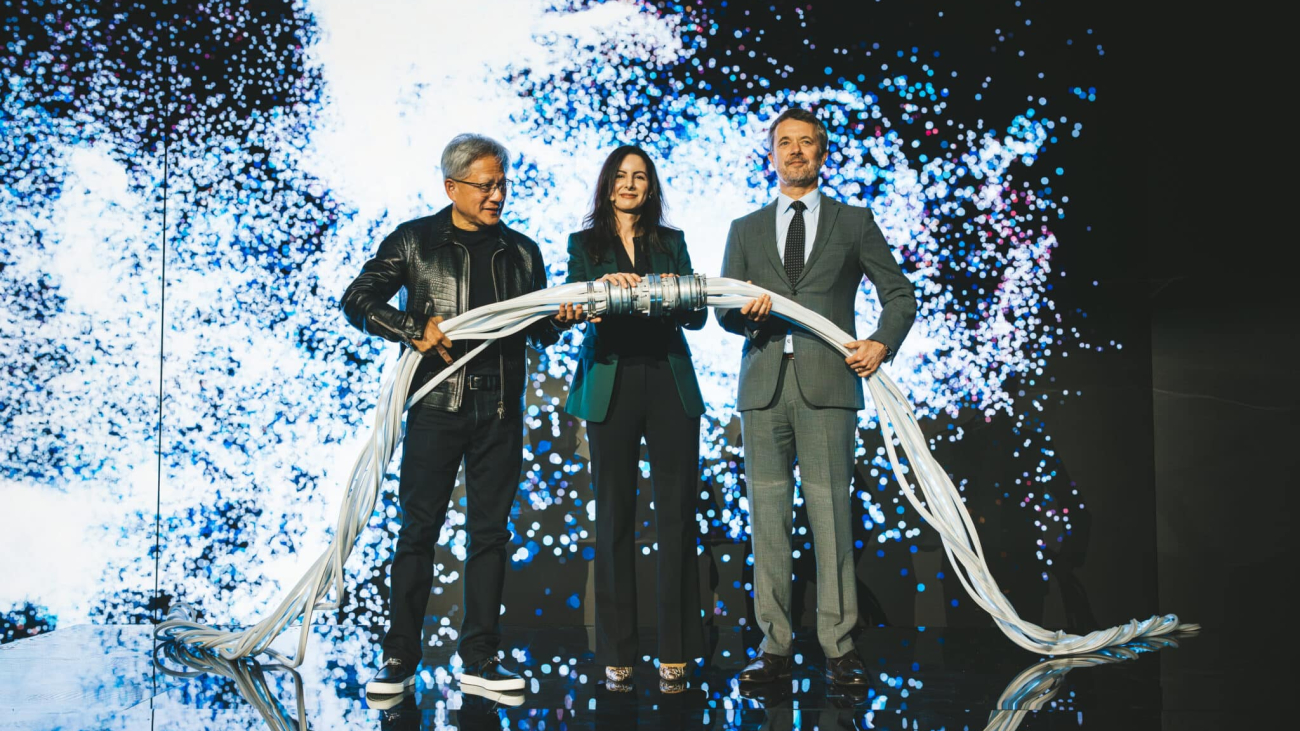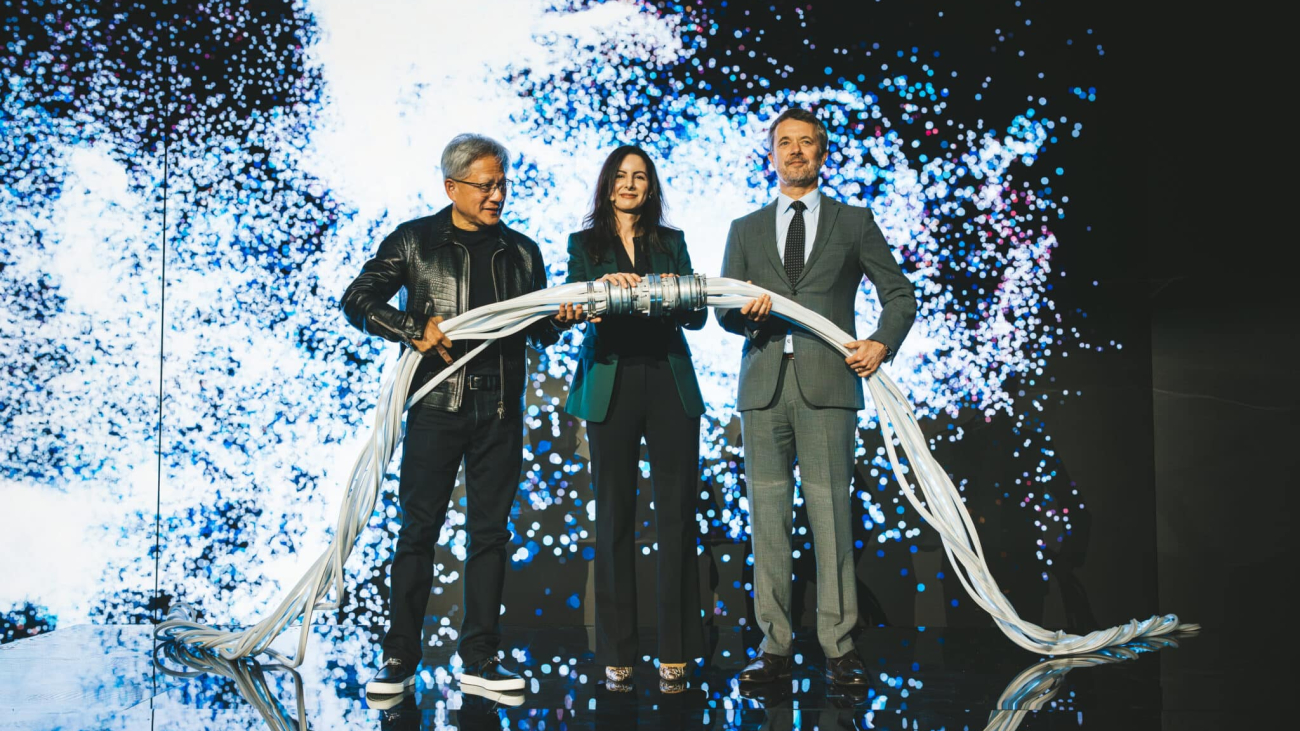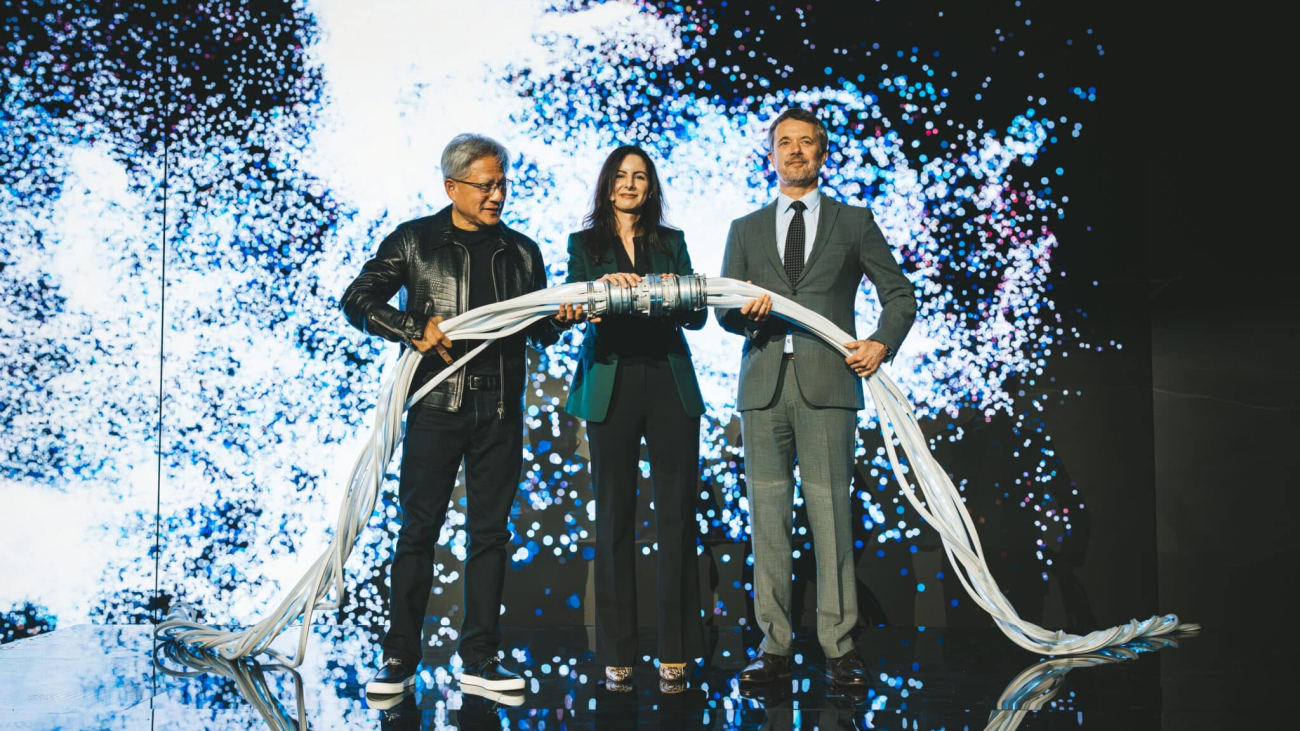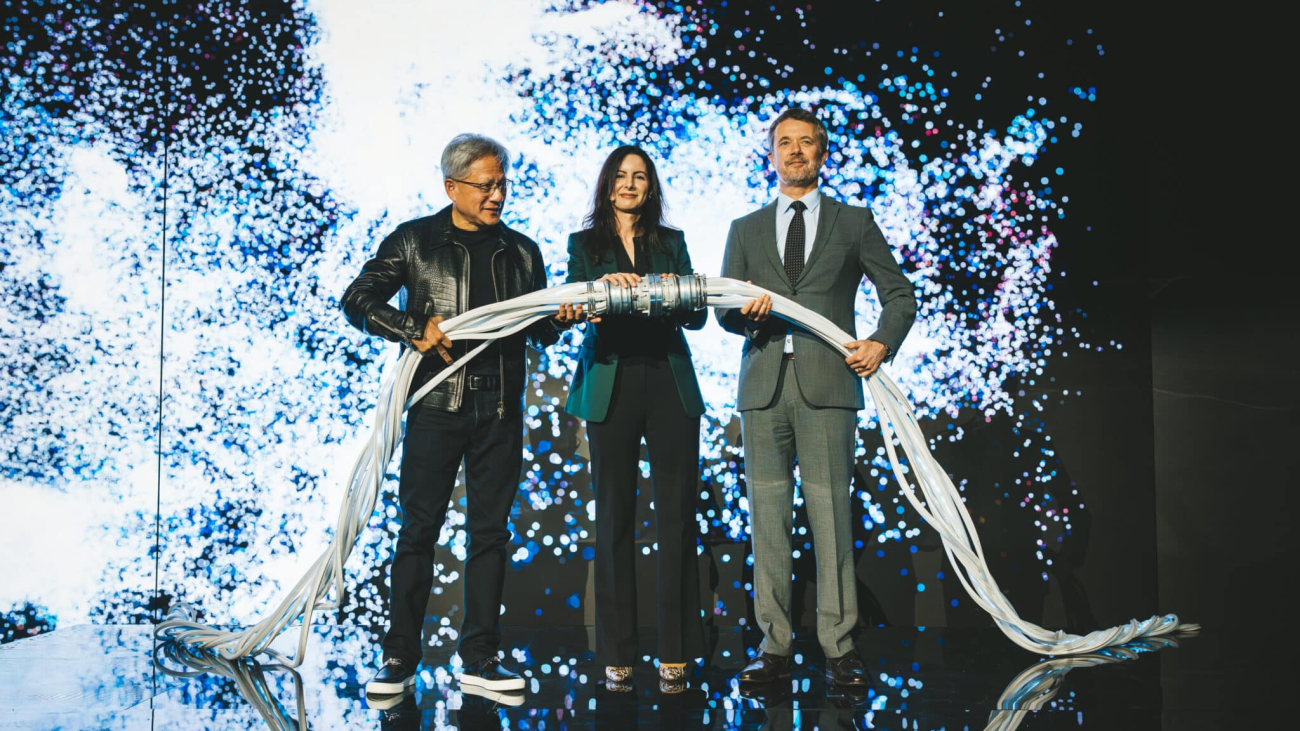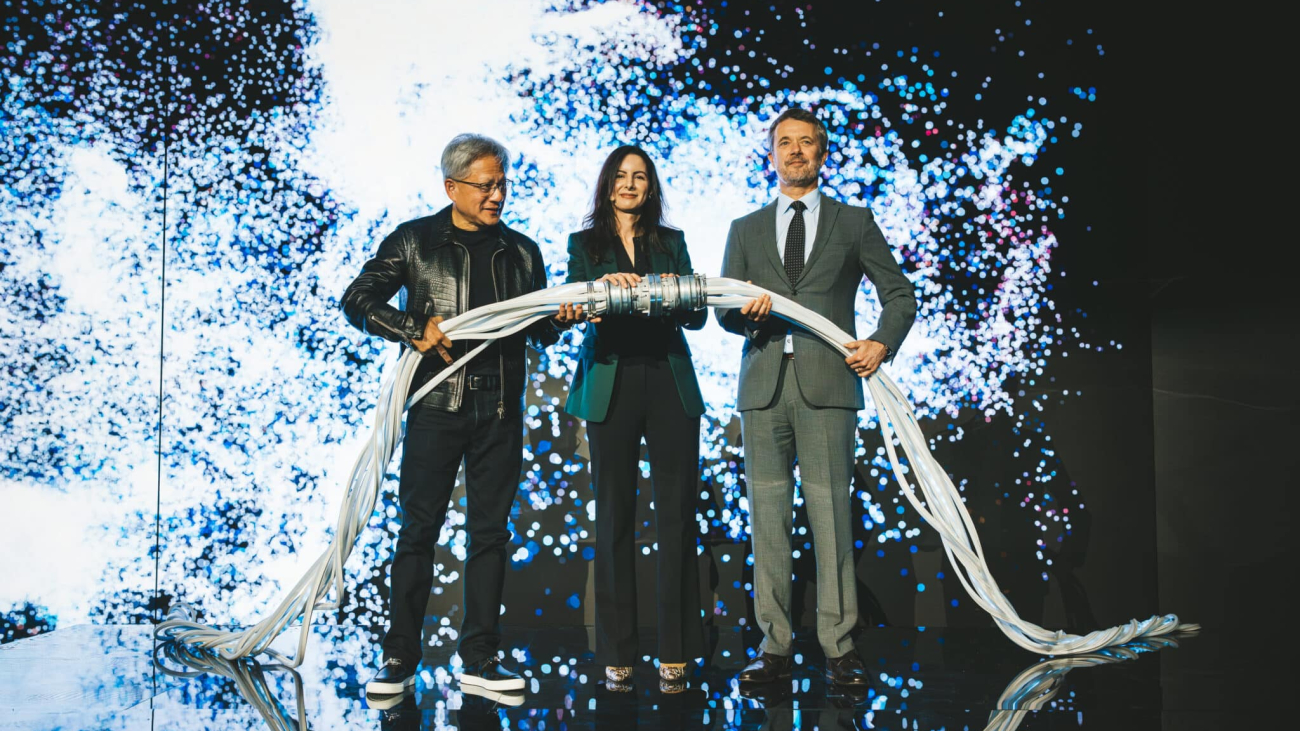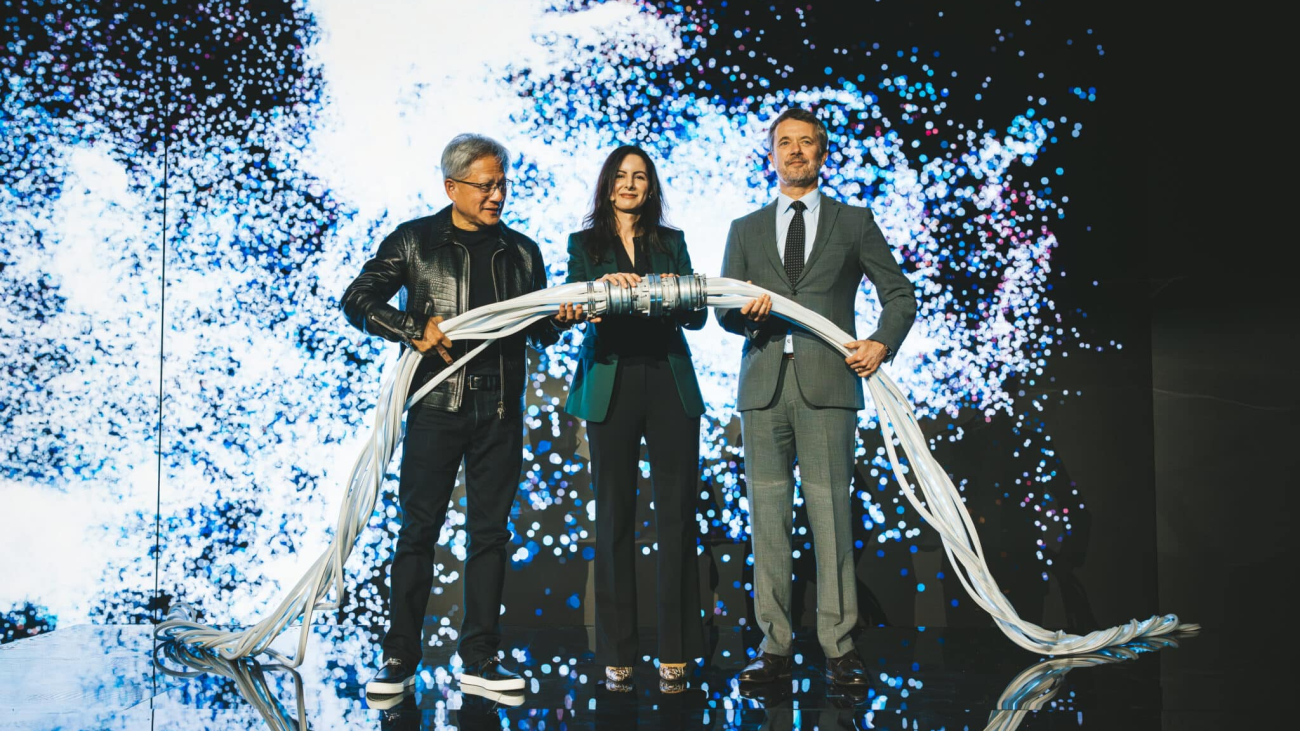NVIDIA founder and CEO Jensen Huang joined the king of Denmark to launch the country’s largest sovereign AI supercomputer, aimed at breakthroughs in quantum computing, clean energy, biotechnology and other areas serving Danish society and the world.
Denmark’s first AI supercomputer, named Gefion after a goddess in Danish mythology, is an NVIDIA DGX SuperPOD driven by 1,528 NVIDIA H100 Tensor Core GPUs and interconnected using NVIDIA Quantum-2 InfiniBand networking.
Gefion is operated by the Danish Center for AI Innovation (DCAI), a company established with funding from the Novo Nordisk Foundation, the world’s wealthiest charitable foundation, and the Export and Investment Fund of Denmark. The new AI supercomputer was symbolically turned on by King Frederik X of Denmark, Huang and Nadia Carlsten, CEO of DCAI, at an event in Copenhagen.
Huang sat down with Carlsten, a quantum computing industry leader, to discuss the public-private initiative to build one of the world’s fastest AI supercomputers in collaboration with NVIDIA.
The Gefion AI supercomputer comes to Copenhagen to serve industry, startups and academia.
“Gefion is going to be a factory of intelligence. This is a new industry that never existed before. It sits on top of the IT industry. We’re inventing something fundamentally new,” Huang said.
The launch of Gefion is an important milestone for Denmark in establishing its own sovereign AI. Sovereign AI can be achieved when a nation has the capacity to produce artificial intelligence with its own data, workforce, infrastructure and business networks. Having a supercomputer on national soil provides a foundation for countries to use their own infrastructure as they build AI models and applications that reflect their unique culture and language.
“What country can afford not to have this infrastructure, just as every country realizes you have communications, transportation, healthcare, fundamental infrastructures — the fundamental infrastructure of any country surely must be the manufacturer of intelligence,” said Huang. “For Denmark to be one of the handful of countries in the world that has now initiated on this vision is really incredible.”
The new supercomputer is expected to address global challenges with insights into infectious disease, climate change and food security. Gefion is now being prepared for users, and a pilot phase will begin to bring in projects that seek to use AI to accelerate progress, including in such areas as quantum computing, drug discovery and energy efficiency.
“The era of computer-aided drug discovery must be within this decade. I’m hoping that what the computer did to the technology industry, it will do for digital biology,” Huang said.
Supporting Next Generation of Breakthroughs With Gefion
The Danish Meteorological Institute (DMI) is in the pilot and aims to deliver faster and more accurate weather forecasts. It promises to reduce forecast times from hours to minutes while greatly reducing the energy footprint required for these forecasts when compared with traditional methods.
Researchers from the University of Copenhagen are tapping into Gefion to implement and carry out a large-scale distributed simulation of quantum computer circuits. Gefion enables the simulated system to increase from 36 to 40 entangled qubits, which brings it close to what’s known as “quantum supremacy,” or essentially outperforming a traditional computer while using less resources.
The University of Copenhagen, the Technical University of Denmark, Novo Nordisk and Novonesis are working together on a multi-modal genomic foundation model for discoveries in disease mutation analysis and vaccine design. Their model will be used to improve signal detection and the functional understanding of genomes, made possible by the capability to train LLMs on Gefion.
Startup Go Autonomous seeks training time on Gefion to develop an AI model that understands and uses multi-modal input from both text, layout and images. Another startup, Teton, is building an AI Care Companion with large video pretraining, using Gefion.
Addressing Global Challenges With Leading Supercomputer
The Gefion supercomputer and ongoing collaborations with NVIDIA will position Denmark, with its renowned research community, to pursue the world’s leading scientific challenges with enormous social impact as well as large-scale projects across industries.
With Gefion, researchers will be able to work with industry experts at NVIDIA to co-develop solutions to complex problems, including research in pharmaceuticals and biotechnology and protein design using the NVIDIA BioNeMo platform.
Scientists will also be collaborating with NVIDIA on fault-tolerant quantum computing using NVIDIA CUDA-Q, the open-source hybrid quantum computing platform.

